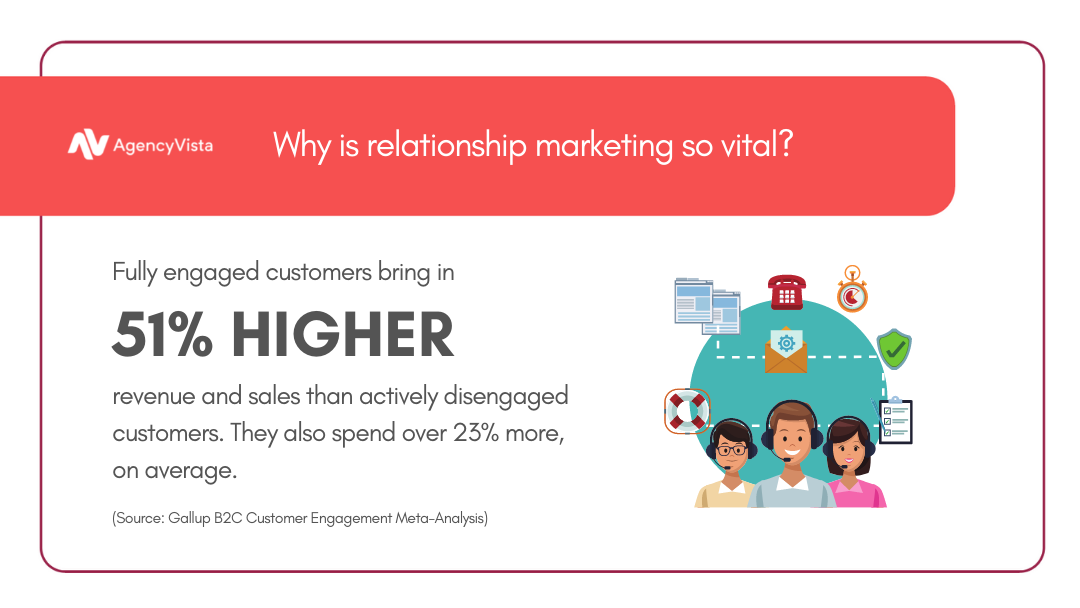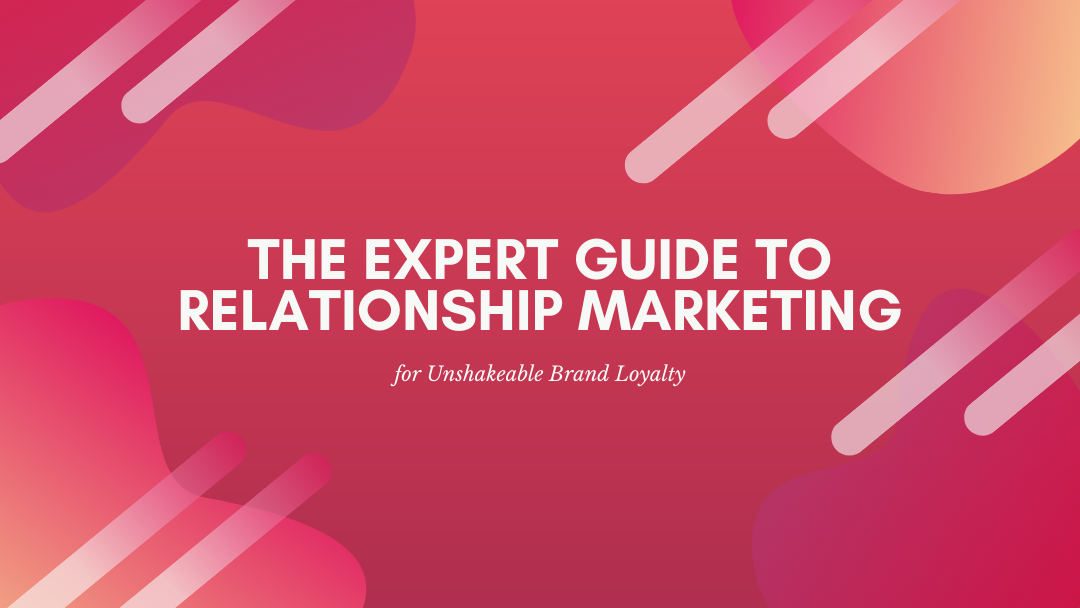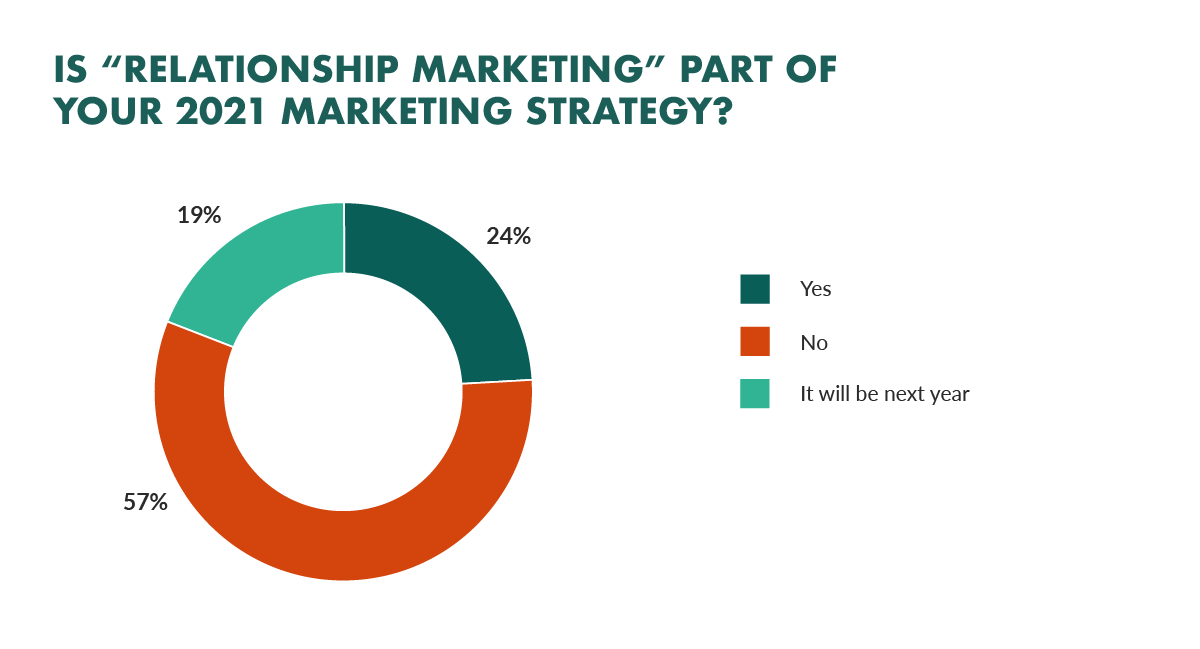In order to flourish in a post-pandemic economy, businesses need to focus on relationship marketing. Finding customers can be hard, and keeping them even harder. Everyone wants to minimize churn in their business, but how do you keep customers coming around? It can feel like no matter the marketing ploys put in place, the offers, and the products available, customer retention always feels a bit hit and miss.

That’s probably because you’re in a transactional marketing mindset – looking for short-term success and quick sales rather than building a long-lasting loyalty with your customers through relationship marketing. Although the former seems to reward your work quicker, if you’re planning on your business sticking around in its field for a while, you’re going to need to rethink your strategy.
What is Relationship Marketing?
As the name suggests, relationship marketing puts the relationships you have with your customers before everything else. This might not appear to be a particularly cost-effective method, as rather than focusing on profits, the focus is on people.
However, studies show that increasing customer retention by as little as five percent can increase your profits by more than 25 percent. This is because loyal customers are more likely to return to you again and again as a trusted business and offer better ROI.
It’s not just about gaining more traffic or setting up a custom call route to minimize time on hold (although these can be handy). It’s also about building a genuine relationship with customers by fulfilling their needs, gaining their trust, and giving them quality service every time.
The more you give them, the more they’ll give back by sharing your news through word of mouth, recommendations, reviews, and brand loyalty over an extended period.
How to Develop Your Relationship Marketing
There are many ways to improve your relationship marketing, but essentially it comes down to being authentic. No one will buy into something that doesn’t match the image your business has put out – it’s like a butcher advocating a vegan lifestyle.
Make sure your message and persona compliment your target customer’s interests and habits. After all, you want to build a relationship with them, so you need to be the sort of business they want to build a relationship with too.
1. Personalization
Alongside showing a bit of your personality as a brand, or even an individual, you must recognize the customer’s personality while being wary of the dangers of stereotyping. What channels do they use to interact with your business, and what content do they engage with? This can provide opportunities to personalize your marketing and the ads they see, so they’re something to get excited about.
Meet customers where they are too. If you’re aiming to appeal to younger demographics, you will need to be on different social media networks and keep up to date with the latest trends. This could mean deploying relevant and interesting hashtags, using automated mobile app testing to build your app, or collaborating with brands your target audience engages with.
If it catches your customer’s interest, it’s going to keep them around longer, giving you more time to build a solid relationship with them.

2. Emotional connections
When working as a business, it’s all too easy to forget you’re a real person interacting with other real people. It can be easier to hide behind the brand name and portray the business as an emotionless corporation. However, you could be shooting yourself in the foot by doing that. Emotional connections can hugely influence a customer to stick around and spend more with you.
You want to build trust in your customers so they feel confident choosing you over and again. Show customers how you deliver on your promises, whether through customer reviews, awards your business has received or using video conferencing software to have face-to-face conversations.
Customers like to be cared for, so customer service should always be at the center of developing emotional connections. Make sure you’re delivering quality and relevant support to customers at every step of their relationship with your business.
3. Communication
Communication is more than getting feedback. Feedback has connotations of a one-way input, which gets stuck in loops and goes nowhere. This isn’t going to build your relationship with your customers.
When a customer leaves a review, fills in a form, or completes a survey from your business, they will want to know that your company received it. Using call monitoring can help you keep track of communications with customers, regardless of platform, and make your communication truly top tier.
Make sure your business is in constant touch with customers, listening to and acting on their suggestions and responding to them. Use automated chatbots to answer FAQs or triggered emails to engage with customers throughout the purchasing process.
Similarly, when you make changes based on customer suggestions and questionnaires, let them know what you’ve done and the impact they had. Share their reviews and recommendations across your platforms and show you value their communication with you.

4. Loyalty rewards
Customers need to see that sticking with your business long-term is beneficial. One easy way of showing this is by creating a loyalty scheme or reward system that engages with customers after their initial purchase. This gives them a reason to stay with you rather than hopping from one brand to another. Customers often choose where their loyalties lie based on what you can offer them.
Be sure to balance what you give with what you want customers to commit to. Most customers are willing to sign up for a regular email newsletter, purchase a certain amount of products, or even refer a friend as long as the reward is worth it.
The bigger the commitment you want customers to make, the higher the quality of reward you’re going to have to offer in return. Nevertheless, a loyalty scheme can last over the years and doesn’t have to pay out all at once.
5. Long-term thinking
Building a relationship with a friend can take years of investment and dedication, and it’s no different with your customers. Consistency is key – they’ll notice if you forget them and start looking elsewhere.
Take the long view to maintain high call center service levels and email quality. Develop content that will resonate with customers one, five, or even ten years in the future. The longer you can retain customers, the more valuable a resource they are, becoming your brand advocates, promoters, income, and supporters.
Think of the things that are going to make customers want to stay with you. This could be ethical business practices, investing in local projects and progressive charity work. If you’re looking to support a specific demographic and are unsure of what language to use in your content, then teaming up with one of these marketing agencies is sure to help:
- Influential Black-Owned Marketing Agencies to Follow in 2021
- Women-Owned Marketing Agencies To Watch Out For In 2021
- Top LGBTQ-Owned Marketing Agencies That Are Changing The World
Being able to show the commitment you’ve made to projects and causes close to your customers’ hearts will emphasize your transparency and value as a brand.
Start Building Brand Loyalty
There’s no time like the present to reimagine your marketing strategies and start building long-term customer relationships. Developing these can open various doors for your business while assuring you a loyal community that values your work.
Likewise, it gives customers security and certainty in what they’ll receive when they interact with your business, from trustworthy cybersecurity practices to quality customer service. Whichever way you look at it, relationship marketing is a win for all involved.
Author Bio:
Jenna Bunnell – Senior Manager, Content Marketing, Dialpad

Jenna Bunnell is the Senior Manager for Content Marketing at Dialpad, an AI-incorporated cloud-hosted unified communications system that provides valuable call details for business owners and sales representatives. She is driven and passionate about communicating a brand’s design sensibility and visualizing how content can be presented in creative and comprehensive ways. Here is her LinkedIn.

